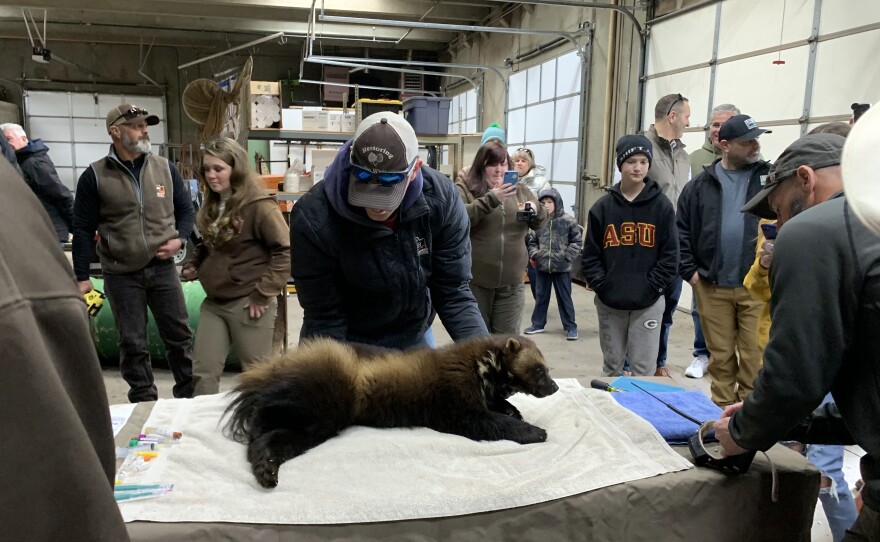Earlier this month, Utah state officials captured a wolverine, collared it with a GPS tracker, and re-released it in the Uintah Mountains. With only eight confirmed wolverine sightings in the state since 1979, the opportunity to study this animal is exciting for wildlife researchers. Mark Hadley, Northern Region Outreach Manager for the Division of Wildlife Resources, said three of these wolverine sightings were just last year.
“But the wolverine, it didn't come back - we never caught it on our cameras, it never came into the trap. So we weren't able to catch it and put a collar on it. So, this is the first time that a wolverine has ever been captured, examined, and had a collar placed on it in the history of the state,” Hadley said.
Hadley said personnel with USDA-Wildlife Services spotted the wolverine preying on a sheep during an aerial livestock protection survey six miles west of Randolph, in Rich County. The DWR then sent a team to investigate and along with the USDA and the sheepherder, they set baited traps in hopes that the wolverine would return for another meal. With all the commotion, Hadley said, they didn’t expect to see the wolverine again.
The next day, a sheepherder found the wolverine had been caught. State officials took it to the DWR regional office in Ogden, where biologists examined the animal, took samples of its hair and blood, and fitted it with a GPS collar. The wolverine was released the same day on the north slope of the Uinta Mountains.
"What’s so exciting about this is they're a really hard animal to study. And the reason why is that they're usually in really rugged, remote types of areas, they don't typically stay in one place for very long, and they're also nocturnal, which means that they mostly move at night. So, you put all of those things together, they're a very difficult animal to ever even see, let alone study,” Hadley said.
Hadley said the wolverine is a healthy three- to four-year-old male and weighs 28 pounds. The average lifespan of a wolverine is ten years, so the DWR hopes to collect several more years of information, thanks to the GPS tracker.





